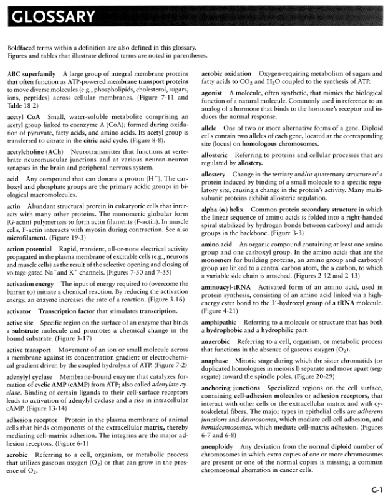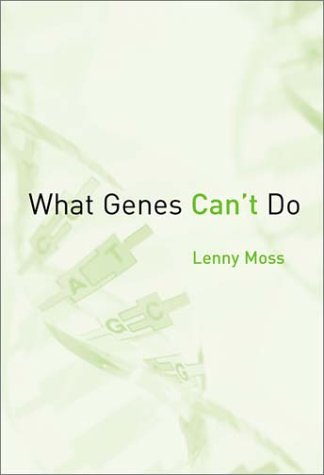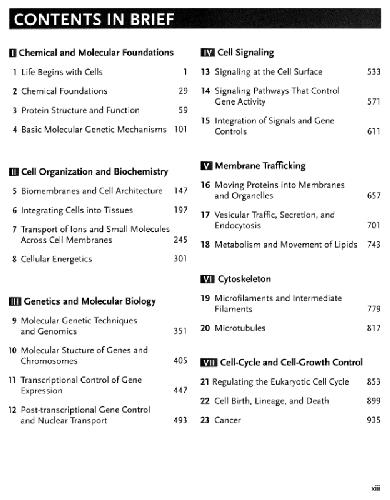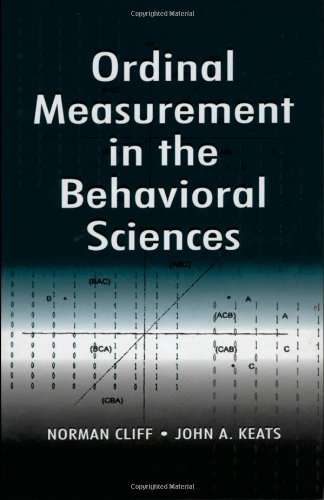David P. Clark BA (honors)Christ’s College Cambridge 1973PhD University of Brsitol (England) 19779780080454214, 9780121755515, 0121755517
Clark effectively introduces basic concepts followed by more specific applications as the text evolves. He has included research results as current as late 2004 when the gene count for humans was officially changed, and takes a thorough look at the medical, agricultural, and social aspects that shape modern-day molecular biology. This text is written in a straightforward manner and beautifully illustrated in full color.
Molecular Biology covers a deliberately broad range of topics to show that molecular biology is not applicable merely to human medicine and health, but also applies to veterinary medicine, evolution, agriculture, and other areas.
* Up to date description of genetic engineering, genomics, and related areas
* Basic concepts followed by more detailed, specific applications
* Hundreds of color illustrations enhance key topics and concepts
* Covers medical, agricultural, and social aspects of molecular biology
* Organized pedagogy includes running glossaries and keynotes (mini-summaries) to hasten comprehension
Table of contents :
Preface……Page 7
Introduction……Page 8
Table of Contents……Page 9
Detailed Contents……Page 10
CHAPTER 1: Basic Genetics……Page 19
Gregor Mendel Was the Father of Classical Genetics……Page 20
Genes Determine Each Step in Biochemical Pathways……Page 21
Mutants Result from Alterations in Genes……Page 22
Phenotypes and Genotypes……Page 23
Chromosomes Are Long, Thin Molecules That Carry Genes……Page 24
Different Organisms may Have Different Numbers of Chromosomes……Page 25
Dominant and Recessive Alleles……Page 26
Partial Dominance, Co-Dominance, Penetrance and Modifier Genes……Page 27
Genes from Both Parents Are Mixed by Sexual Reproduction……Page 29
Sex Determination and Sex-Linked Characteristics……Page 31
Neighboring Genes Are Linked during Inheritance……Page 33
Recombination during Meiosis Ensures Genetic Diversity……Page 34
Escherichia coli is a Model for Bacterial Genetics……Page 35
CHAPTER 2: Cells and Organisms……Page 39
What Is Life?……Page 40
Essential Properties of a Living Cell……Page 41
Prokaryotic Cells Lack a Nucleus……Page 45
Eubacteria and Archaebacteria Are Genetically Distinct……Page 46
Bacteria Were Used for Fundamental Studies of Cell Function……Page 47
Escherichia coli (E. coli) Is a Model Bacterium……Page 49
Where Are Bacteria Found in Nature?……Page 50
Eukaryotic Cells Are Sub-Divided into Compartments……Page 52
Eukaryotes Possess Two Basic Cell Lineages……Page 54
Organisms Are Classified……Page 56
Yeast Is a Widely Studied Single-Celled Eukaryote……Page 58
A Roundworm and a Fly Are Model Multicellular Animals……Page 59
Zebrafish are used to Study Vertebrate Development……Page 60
Arabidopsis Serves as a Model for Plants……Page 62
Haploidy, Diploidy and the Eukaryote Cell Cycle……Page 63
Viruses Are Not Living Cells……Page 64
Bacterial Viruses Infect Bacteria……Page 65
Human Viral Diseases Are Common……Page 66
A Variety of Subcellular Genetic Entities Exist……Page 67
CHAPTER 3: DNA, RNA and Protein……Page 69
Chemical Structure of Nucleic Acids……Page 70
DNA and RNA Each Have Four Bases……Page 72
Nucleosides Are Bases Plus Sugars; Nucleotides Are Nucleosides Plus Phosphate……Page 73
Double Stranded DNA Forms a Double Helix……Page 74
Base Pairs are Held Together by Hydrogen Bonds……Page 75
Complementary Strands Reveal the Secret of Heredity……Page 77
Constituents of Chromosomes……Page 78
The Central Dogma Outlines the Flow of Genetic Information……Page 81
Ribosomes Read the Genetic Code……Page 83
The Genetic Code Dictates the Amino Acid Sequence of Proteins……Page 85
Various Classes of RNA Have Different Functions……Page 87
Proteins, Made of Amino Acids, Carry Out Many Cell Functions……Page 88
The Structure of Proteins Has Four Levels of Organization……Page 89
Proteins Vary in Their Biological Roles……Page 91
CHAPTER 4: Genes, Genomes and DNA……Page 93
History of DNA as the Genetic Material……Page 94
Non-Coding DNA……Page 96
Coding DNA May Be Present within Non-coding DNA……Page 98
Repeated Sequences Are a Feature of DNA in Higher Organisms……Page 99
Satellite DNA Is Non-coding DNA in the Form of Tandem Repeats……Page 101
Origin of Selfish DNA and Junk DNA……Page 102
Palindromes, Inverted Repeats and Stem and Loop Structures……Page 104
Multiple A-Tracts Cause DNA to Bend……Page 105
Supercoiling is Necessary for Packaging of Bacterial DNA……Page 106
Topoisomerases and DNA Gyrase……Page 107
Supercoiling Affects DNA Structure……Page 109
Alternative Helical Structures of DNA Occur……Page 110
Histones Package DNA in Eukaryotes……Page 113
Further Levels of DNA Packaging in Eukaryotes……Page 114
Melting Separates DNA Strands; Cooling Anneals Them……Page 118
CHAPTER 5: Cell Division and DNA Replication……Page 121
DNA Replication Is a Two-Stage Process Occurring at the Replication Fork……Page 122
Supercoiling Causes Problems for Replication……Page 123
Properties of DNA Polymerase……Page 125
Supplying the Precursors for DNA Synthesis……Page 127
DNA Polymerase Elongates DNA Strands……Page 129
The Complete Replication Fork Is Complex……Page 130
Discontinuous Synthesis of DNA Requires a Primosome……Page 132
Completing the Lagging Strand……Page 134
Chromosome Replication Initiates at oriC……Page 136
DNA Methylation and Attachment to the Membrane Control Initiation of Replication……Page 138
Chromosome Replication Terminates at terC……Page 139
Disentangling the Daughter Chromosomes……Page 140
How Long Does It Take for Bacteria to Replicate?……Page 142
The Concept of the Replicon……Page 143
Replicating Linear DNA in Eukaryotes……Page 144
Eukaryotic Chromosomes Have Multiple Origins……Page 147
Cell Division in Higher Organisms……Page 148
CHAPTER 6: Transcription of Genes……Page 150
Genes are Expressed by Making RNA……Page 151
Terminology: Cistrons, Coding Sequences and Open Reading Frames……Page 152
How Is the Beginning of a Gene Recognized?……Page 153
Manufacturing the Message……Page 155
RNA Polymerase Knows Where to Stop……Page 156
How Does the Cell Know Which Genes to Turn On?……Page 158
What Activates the Activator?……Page 159
Negative Regulation Results from the Action of Repressors……Page 161
Many Regulator Proteins Bind Small Molecules and Change Shape……Page 162
Transcription in Eukaryotes Is More Complex……Page 163
Transcription of rRNA and tRNA in Eukaryotes……Page 164
Transcription of Protein-Encoding Genes in Eukaryotes……Page 166
Upstream Elements Increase the Efficiency of RNA Polymerase II Binding……Page 169
Enhancers Control Transcription at a Distance……Page 170
CHAPTER 7: Protein Structure and Function……Page 172
Twenty Amino Acids Form Biological Polypeptides……Page 173
Amino Acids Show Asymmetry around the Alpha-carbon……Page 176
The Secondary Structure of Proteins Relies on Hydrogen Bonds……Page 178
The Tertiary Structure of Proteins……Page 181
A Variety of Forces Maintain the 3-D Structure of Proteins……Page 183
Multiple Folding Domains in Larger Proteins……Page 184
Quaternary Structure of Proteins……Page 185
Cofactors and Metal Ions Are Often Associated with Proteins……Page 187
Nucleoproteins, Lipoproteins and Glycoproteins Are Conjugated Proteins……Page 190
Proteins Serve Numerous Cellular Functions……Page 192
Enzymes Catalyze Metabolic Reactions……Page 195
Enzymes Have Varying Specificities……Page 197
Enzymes Are Named and Classified According to the Substrate……Page 199
Enzymes Act by Lowering the Energy of Activation……Page 200
Substrate Analogs and Enzyme Inhibitors Act at the Active Site……Page 202
Allosteric Enzymes Are Affected by Signal Molecules……Page 205
Enzymes May Be Controlled by Chemical Modification……Page 207
Binding of Proteins to DNA Occurs in Several Different Ways……Page 208
Denaturation of Proteins……Page 212
CHAPTER 8: Protein Synthesis……Page 215
Proteins Are Gene Products……Page 216
Decoding the Genetic Code……Page 217
Transfer RNA Forms a Flat Cloverleaf Shape and a Folded “L” Shape……Page 218
Modified Bases Are Present in Transfer RNA……Page 219
Some tRNA Molecules Read More Than One Codon……Page 220
The Ribosome: The Cell’s Decoding Machine……Page 222
Three Possible Reading Frames Exist……Page 226
The Start Codon Is Chosen……Page 228
The tRNA Occupies Three Sites During Elongation of the Polypeptide……Page 229
Termination of Protein Synthesis Requires Release Factors……Page 231
Several Ribosomes Usually Read the Same Message at Once……Page 232
Bacterial Messenger RNA Can Code for Several Proteins……Page 233
Transcription and Translation Are Coupled in Bacteria……Page 234
Some Ribosomes Become Stalled and Are Rescued……Page 235
Initiation of Protein Synthesis in Eukaryotes……Page 236
A Signal Sequence Marks a Protein for Export from the Cell……Page 239
Molecular Chaperones Oversee Protein Folding……Page 242
Protein Synthesis Occurs in Mitochondria and Chloroplasts……Page 243
Mistranslation Usually Results in Mistakes in Protein Synthesis……Page 244
Selenocysteine: The 21st Amino Acid……Page 245
Pyrrolysine: The 22nd Amino Acid……Page 246
Many Antibiotics Work by Inhibiting Protein Synthesis……Page 248
Degradation of Proteins……Page 249
CHAPTER 9: Regulation of Transcription in Prokaryotes……Page 252
Gene Regulation Ensures a Physiological Response……Page 253
Regulation at the Level of Transcription Involves Several Steps……Page 254
Heat Shock Sigma Factors in Prokaryotes Are Regulated by Temperature……Page 256
Cascades of Alternative Sigma Factors Occur in Bacillus Spore Formation……Page 257
Anti-sigma Factors Inactivate Sigma; Anti-anti-sigma Factors Free It to Act……Page 260
Activators and Repressors Participate in Positive and Negative Regulation……Page 261
The Operon Model of Gene Regulation……Page 262
Some Proteins May Act as Both Repressors and Activators……Page 264
Nature of the Signal Molecule……Page 266
Activators and Repressors May Be Covalently Modified……Page 270
Two-Component Regulatory Systems……Page 271
Specific versus Global Control……Page 272
Crp Protein Is an Example of a Global Control Protein……Page 273
Accessory Factors and Nucleoid Binding Proteins……Page 274
Action at a Distance and DNA Looping……Page 275
Anti-Termination as a Control Mechanism……Page 276
CHAPTER 10: Regulation of Transcription in Eukaryotes……Page 280
Transcriptional Regulation in Eukaryotes Is More Complex Than in Prokaryotes……Page 281
The Mediator Complex Transmits Information to RNA Polymerase……Page 282
Enhancers and Insulator Sequences Segregate DNA Functionally……Page 283
Matrix Attachment Regions Allow DNA Looping……Page 286
Negative Regulation of Transcription Occurs in Eukaryotes……Page 287
Heterochromatin Causes Difficulty for Access to DNA in Eukaryotes……Page 288
Methylation of DNA in Eukaryotes Controls Gene Expression……Page 291
Genetic Imprinting in Eukaryotes Has Its Basis in DNA Methylation Patterns……Page 293
X-Chromosome Inactivation Occurs in Female XX Animals……Page 295
CHAPTER 11: Regulation at the RNA Level……Page 299
Binding of Proteins to mRNA Controls The Rate of Degradation……Page 300
Some mRNA Molecules Must Be Cleaved Before Translation……Page 301
Some Regulatory Proteins May Cause Translational Repression……Page 302
Some Regulatory Proteins Can Activate Translation……Page 305
Translation May Be Regulated by Antisense RNA……Page 306
Regulation of Translation by Alterations to the Ribosome……Page 308
RNA Interference (RNAi)……Page 309
Amplification and Spread of RNAi……Page 310
Experimental Administration of siRNA……Page 311
PTGS in Plants and Quelling in Fungi……Page 312
Micro RNA—A Class of Small Regulatory RNA……Page 313
Premature Termination Causes Attenuation of RNA Transcription……Page 315
Riboswitches—RNA Acting Directly as a Control Mechanism……Page 317
CHAPTER 12: Processing of RNA……Page 320
RNA is Processed in Several Ways……Page 321
Coding and Non-Coding RNA……Page 322
Eukaryotic Messenger RNA Contains a Cap and a Tail……Page 323
Capping is the First Step in Maturation of mRNA……Page 324
A Poly(A) Tail is Added to Eukaryotic mRNA……Page 326
Introns are Removed from RNA by Splicing……Page 328
Different Classes of Intron Show Different Splicing Mechanisms……Page 332
Alternative Splicing Produces Multiple Forms of RNA……Page 333
Inteins and Protein Splicing……Page 336
Base Modification of rRNA Requires Guide RNA……Page 340
RNA Editing Involves Altering the Base Sequence……Page 342
Degradation of mRNA……Page 345
Nonsense Mediated Decay of mRNA……Page 346
CHAPTER 13: Mutations……Page 351
Mutations Alter the DNA Sequence……Page 352
The Major Types of Mutation……Page 353
Missense Mutations May Have Major or Minor Effects……Page 354
Nonsense Mutations Cause Premature Polypeptide Chain Termination……Page 356
Deletion Mutations Result in Shortened or Absent Proteins……Page 358
Insertion Mutations Commonly Disrupt Existing Genes……Page 359
DNA Rearrangements Include Inversions, Translocations, and Duplications……Page 361
Phase Variation Is Due to Reversible DNA Alterations……Page 363
Silent Mutations Do Not Alter the Phenotype……Page 364
Chemical Mutagens Damage DNA……Page 366
Radiation Causes Mutations……Page 368
Spontaneous Mutations Can Be Caused by DNA Polymerase Errors……Page 369
Spontaneous Mutation Can Be Caused by Inherent Chemical Instability……Page 371
Mutations Occur More Frequently at Hot Spots……Page 373
How Often Do Mutations Occur?……Page 376
Reversions Are Genetic Alterations That Change the Phenotype Back to Wild-type……Page 377
Reversion Can Occur by Compensatory Changes in Other Genes……Page 379
Altered Decoding by Transfer RNA May Cause Suppression……Page 380
Mutagenic Chemicals Can Be Detected by Reversion……Page 381
Experimental Isolation of Mutations……Page 382
In Vivo versus In Vitro Mutagenesis……Page 383
Site-Directed Mutagenesis……Page 384
CHAPTER 14: Recombination and Repair……Page 386
Overview of Recombination……Page 387
Molecular Basis of Homologous Recombination……Page 388
Single-Strand Invasion and Chi Sites……Page 389
Site-Specific Recombination……Page 391
Recombination in Higher Organisms……Page 394
Overview of DNA Repair……Page 396
DNA Mismatch Repair System……Page 397
General Excision Repair System……Page 399
DNA Repair by Excision of Specific Bases……Page 401
Specialized DNA Repair Mechanisms……Page 402
Transcriptional Coupling of Repair……Page 405
SOS Error Prone Repair in Bacteria……Page 406
Repair in Eukaryotes……Page 409
Gene Conversion……Page 410
CHAPTER 15: Mobile DNA……Page 414
Most Mobile DNA Consists of Transposable Elements……Page 415
The Essential Parts of a Transposon……Page 416
Insertion Sequences—the Simplest Transposons……Page 418
Movement by Conservative Transposition……Page 419
Complex Transposons Move by Replicative Transposition……Page 420
Composite Transposons……Page 424
Transposition may Rearrange Host DNA……Page 426
Transposons in Higher Life Forms……Page 428
Retro-Elements Make an RNA Copy……Page 430
Repetitive DNA of Mammals……Page 432
Retro-Insertion of Host-Derived DNA……Page 433
Retrons Encode Bacterial Reverse Transcriptase……Page 434
Bacteriophage Mu is a Transposon……Page 435
Integrons Collect Genes for Transposons……Page 438
Junk DNA and Selfish DNA……Page 440
Homing Introns……Page 441
CHAPTER 16: Plasmids……Page 443
Plasmids as Replicons……Page 444
General Properties of Plasmids……Page 445
Occasional Plasmids are Linear or Made of RNA……Page 446
Plasmid DNA Replicates by Two Alternative Methods……Page 448
Control of Copy Number by Antisense RNA……Page 450
Plasmid Addiction and Host Killing Functions……Page 453
Antibiotic Resistance Plasmids……Page 454
Resistance to Beta-Lactam Antibiotics……Page 456
Resistance to Chloramphenicol……Page 457
Resistance to Aminoglycosides……Page 458
Resistance to Tetracycline……Page 459
Plasmids may Provide Aggressive Characters……Page 460
Most Colicins Kill by One of Two Different Mechanisms……Page 462
Bacteria are Immune to their own Colicins……Page 463
Virulence Plasmids……Page 464
Ti-Plasmids are Transferred from Bacteria to Plants……Page 465
The 2-Micron Plasmid of Yeast……Page 468
Certain DNA Molecules may Behave as Viruses or Plasmids……Page 469
CHAPTER 17: Viruses……Page 471
Viruses are Infectious Packages of Genetic Information……Page 472
Life Cycle of a Virus……Page 473
Bacterial Viruses are Known as Bacteriophage……Page 476
Lysogeny or Latency by Integration……Page 478
The Great Diversity of Viruses……Page 480
Small Single-Stranded DNA Viruses of Bacteria……Page 481
Complex Bacterial Viruses with Double Stranded DNA……Page 483
DNA Viruses of Higher Organisms……Page 484
Viruses with RNA Genomes Have Very Few Genes……Page 485
Positive-Stranded RNA Viruses Make Polyproteins……Page 487
Plant RNA Viruses……Page 488
Retroviruses Use both RNA and DNA……Page 490
Subviral Infectious Agents……Page 495
Satellite Viruses……Page 497
Viroids are Naked Molecules of Infectious RNA……Page 498
Prions are Infectious Proteins……Page 499
CHAPTER 18: Bacterial Genetics……Page 502
Fate of the Incoming DNA after Uptake……Page 503
Transformation is Gene Transfer by Naked DNA……Page 505
Transformation as Proof that DNA is the Genetic Material……Page 506
Transformation in Nature……Page 509
Generalized Transduction……Page 511
Specialized Transduction……Page 512
Transfer of Plasmids between Bacteria……Page 513
Transfer of Chromosomal Genes Requires Plasmid Integration……Page 514
Gene Transfer among Gram-Positive Bacteria……Page 519
Archaebacterial Genetics……Page 522
Whole Genome Sequencing……Page 524
CHAPTER 19: Diversity of Lower Eukaryotes……Page 526
Origin of the Eukaryotes by Symbiosis……Page 527
The Genomes of Mitochondria and Chloroplasts……Page 528
Primary and Secondary Endosymbiosis……Page 529
Is Malaria Really a Plant?……Page 530
Bacterial Endosymbionts of Killer Paramecium……Page 533
Ciliates have Two Types of Nucleus……Page 535
Trypanosomes Vary Surface Proteins to Outwit the Immune System……Page 538
Mating Type Determination in Yeast……Page 543
Multi-Cellular Organisms and Homeobox Genes……Page 548
CHAPTER 20: Molecular Evolution……Page 551
The Early Atmosphere……Page 552
Oparin’s Theory of the Origin of Life……Page 553
The Miller Experiment……Page 554
Polymerization of Monomers to Give Macromolecules……Page 556
Enzyme Activities of Random Proteinoids……Page 557
Ribozymes and the RNA World……Page 558
The First Cells……Page 560
The Autotrophic Theory of the Origin of Metabolism……Page 562
Evolution of DNA, RNA and Protein Sequences……Page 563
Creating New Genes by Duplication……Page 565
Paralogous and Orthologous Sequences……Page 567
Different Proteins Evolve at Very Different Rates……Page 568
Ribosomal RNA—A Slowly Ticking Clock……Page 570
The Archaebacteria versus the Eubacteria……Page 572
DNA Sequencing and Biological Classification……Page 573
Mitochondrial DNA—A Rapidly Ticking Clock……Page 577
The African Eve Hypothesis……Page 578
Ancient DNA from Extinct Animals……Page 580
Evolving Sideways: Horizontal Gene Transfer……Page 582
Problems in Estimating Horizontal Gene Transfer……Page 583
CHAPTER 21: Nucleic Acids: Isolation, Purification, Detection, and Hybridization……Page 585
Purification of DNA……Page 586
Removal of Unwanted RNA……Page 587
Gel Electrophoresis of DNA……Page 588
Pulsed Field Gel Electrophoresis……Page 590
Denaturing Gradient Gel Electrophoresis……Page 591
Chemical Synthesis of DNA……Page 592
Peptide Nucleic Acid……Page 598
Measuring the Concentration of DNA and RNA with Ultraviolet Light……Page 600
Detection of Radio-Labeled DNA……Page 601
Fluorescence in the Detection of DNA and RNA……Page 603
Chemical Tagging with Biotin or Digoxigenin……Page 605
The Electron Microscope……Page 606
Hybridization of DNA and RNA……Page 608
Southern, Northern, and Western Blotting……Page 610
Fluorescence in Situ Hybridization (FISH)……Page 613
Molecular Beacons……Page 616
CHAPTER 22: Recombinant DNA Technology……Page 617
Restriction and Modification of DNA……Page 618
Naming of Restriction Enzymes……Page 619
Cutting of DNA by Restriction Enzymes……Page 620
DNA Fragments are Joined by DNA Ligase……Page 621
Making a Restriction Map……Page 622
Restriction Fragment Length Polymorphisms (RFLPs)……Page 625
Properties of Cloning Vectors……Page 626
Inserting Genes into Vectors……Page 628
Detecting Insertions in Vectors……Page 630
Moving Genes between Organisms: Shuttle Vectors……Page 633
Bacteriophage Lambda Vectors……Page 634
Cosmid Vectors……Page 635
Bacterial and P1 Artificial Chromosomes……Page 638
A DNA Library Is a Collection of Genes from One Organism……Page 639
Screening a Library by Immunological Procedures……Page 641
Cloning Complementary DNA Avoids Introns……Page 642
Chromosome Walking……Page 644
Cloning by Subtractive Hybridization……Page 646
Expression Vectors……Page 649
CHAPTER 23: The Polymerase Chain Reaction……Page 652
Fundamentals of the Polymerase Chain Reaction……Page 653
Cycling Through the PCR……Page 656
Degenerate Primers……Page 658
Inverse PCR……Page 659
Adding Artificial Restriction Sites……Page 660
Randomly Amplified Polymorphic DNA (RAPD)……Page 661
Reverse Transcriptase PCR……Page 664
Differential Display PCR……Page 665
PCR in Genetic Engineering……Page 667
Engineering Deletions and Insertions by PCR……Page 669
Use of PCR in Medical Diagnosis……Page 670
Environmental Analysis by PCR……Page 671
Rescuing DNA from Extinct Life Forms by PCR……Page 672
Realtime Fluorescent PCR……Page 673
Inclusion of Molecular Beacons in PCR—Scorpion Primers……Page 674
Rolling Circle Amplification Technology (RCAT)……Page 675
CHAPTER 24: Genomics and DNA Sequencing……Page 680
The Chain Termination Method for Sequencing DNA……Page 681
Producing Template DNA for Sequencing……Page 686
Automated Sequencing……Page 688
The Oligonucleotide Array Detector……Page 690
Pyrosequencing……Page 692
Large Scale Mapping with Sequence Tags……Page 694
Mapping of Sequence Tagged Sites……Page 695
Race for the Human Genome……Page 698
Survey of the Human Genome……Page 701
Sequence Polymorphisms: SSLPs and SNPs……Page 704
Gene Identification by Exon Trapping……Page 706
Bioinformatics and Computer Analysis……Page 708
CHAPTER 25: Analysis of Gene Expression……Page 711
Reporter Genes for Monitoring Gene Expression……Page 712
Light Emission by Luciferase as a Reporter System……Page 714
Gene Fusions……Page 717
Locating Protein Binding Sites in the Upstream Region……Page 720
Location of the Start of Transcription by Primer Extension……Page 724
Location of the Start of Transcription by S1 Nuclease……Page 725
DNA Microarrays for Gene Expression……Page 727
Serial Analysis of Gene Expression (SAGE)……Page 731
CHAPTER 26: Proteomics: The Global Analysis of Proteins……Page 735
Introduction to Proteomics……Page 736
Gel Electrophoresis of Proteins……Page 737
Two Dimensional PAGE of Proteins……Page 738
Mass Spectrometry for Protein Identification……Page 740
Full-Length Proteins Used as Fusion Tags……Page 744
Selection by Phage Display……Page 747
Protein Interactions: The Yeast Two-Hybrid System……Page 750
Protein Interaction by Co-Immunoprecipitation……Page 755
Metabolomics……Page 759
Glossary……Page 763
Index……Page 789







Reviews
There are no reviews yet.